Abstract
Erythrocytes from 30 patients suffering from systemic lupus erythematosus (SLE) were tested for CR1 activity by an immune adherence haemagglutination technique. Defective CR1 activity (CR1D) was found in 11 (37%) of the patients on initial testing. On repeat testings, however, CR1 activity often varied from time to time and was shown to be inversely related to serum anti-DNA binding and apparent complement activation in vivo. Two of the 19 patients with normal CR1 activity acquired CR1D during the study. One patient with previously defective CR1 attained normal activity in the course of the study. The increased occurrence of CR1D in patients with SLE is largely or wholly acquired rather than genetically determined.
Full text
PDF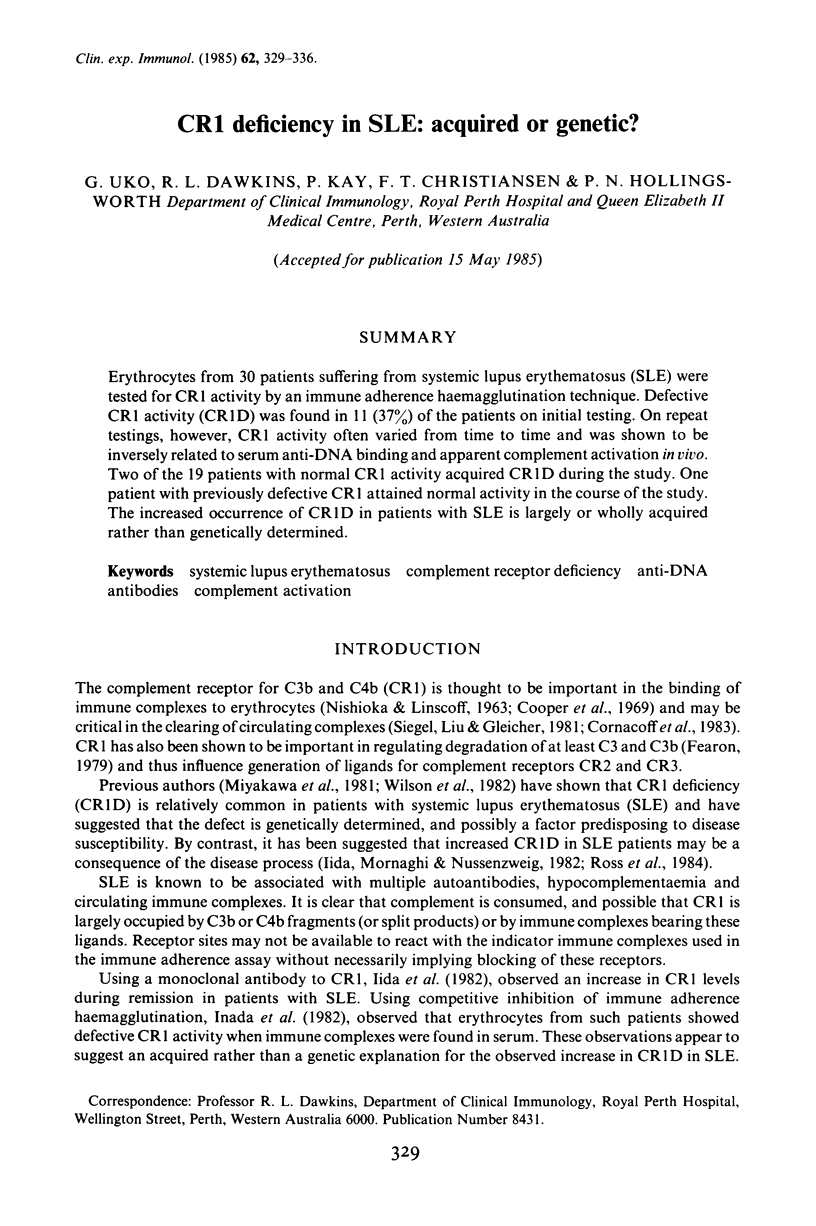
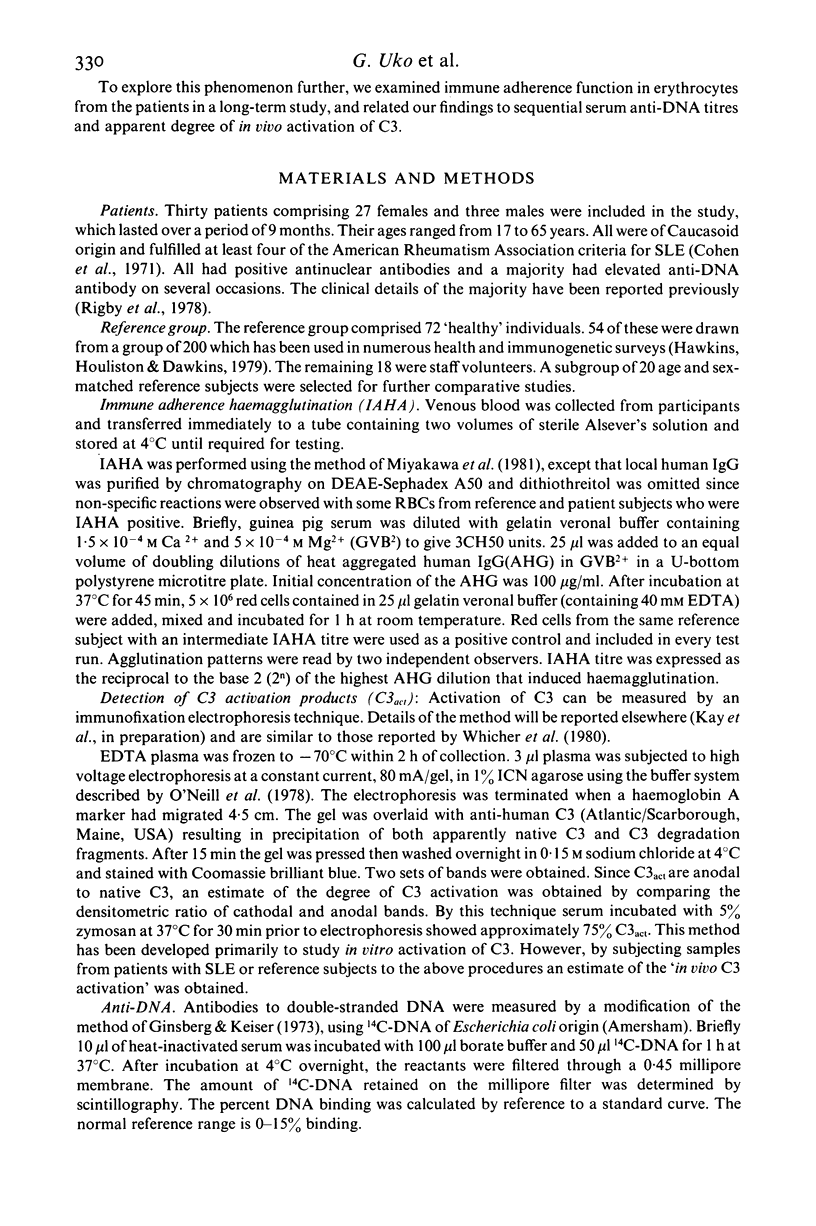
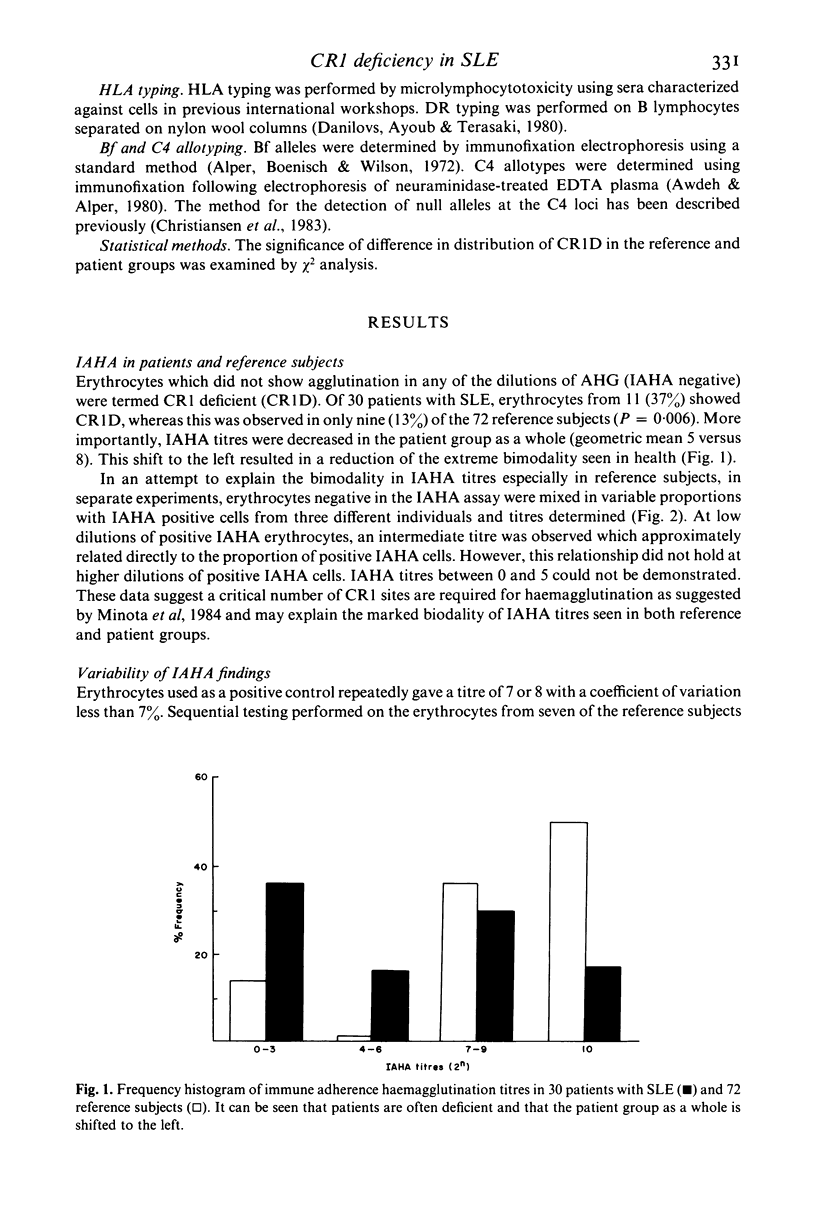
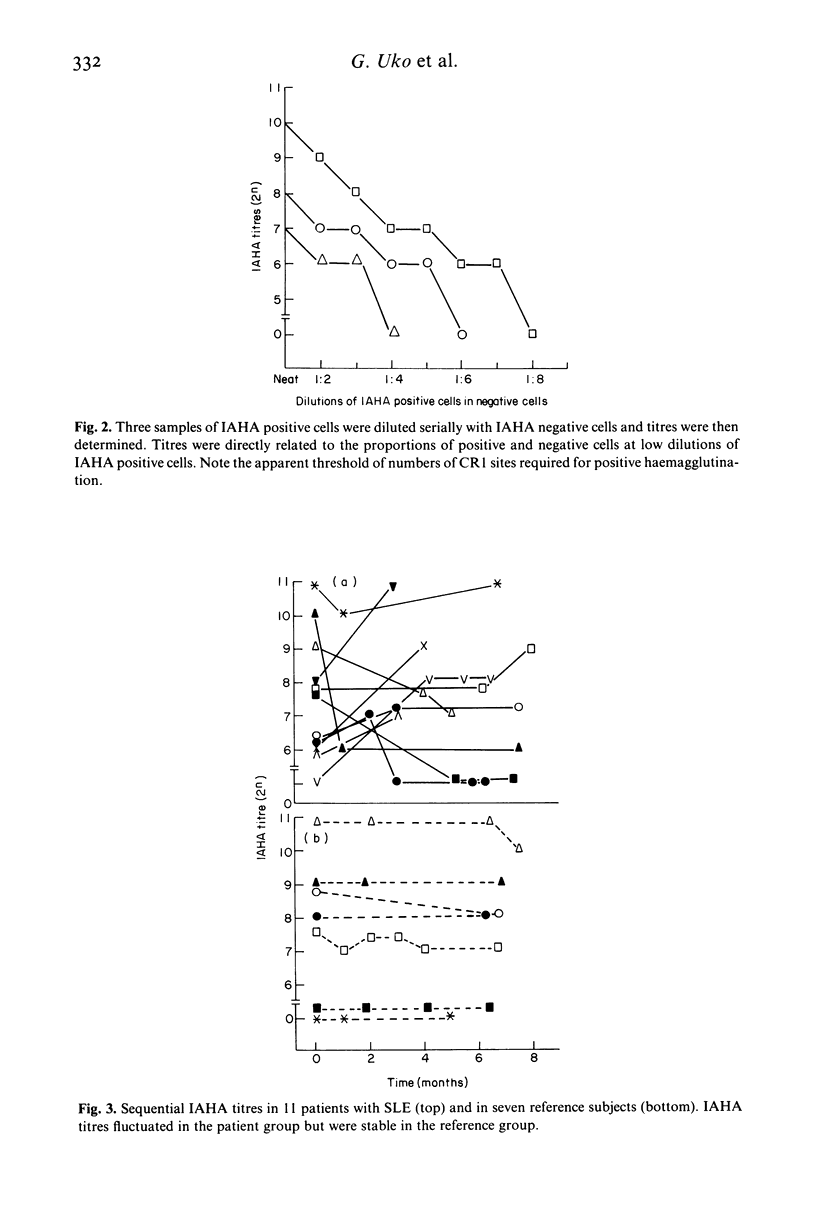
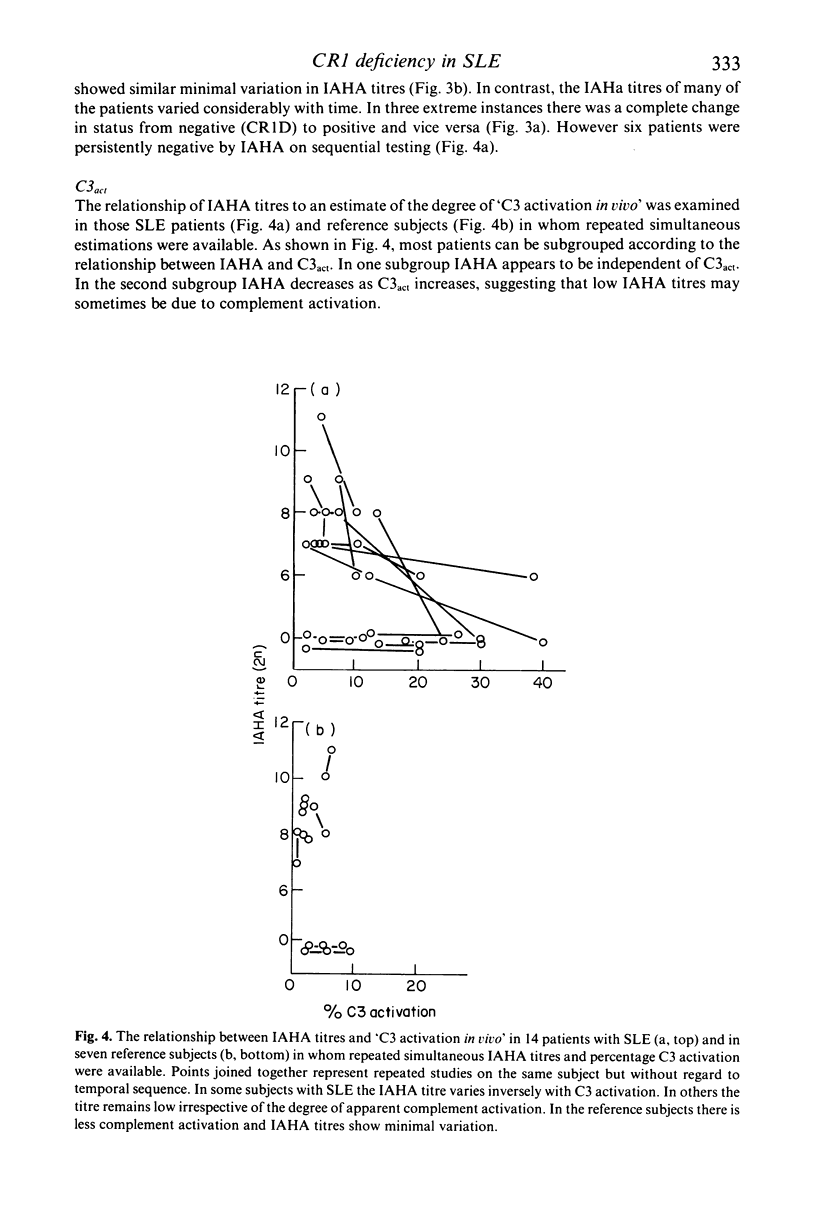
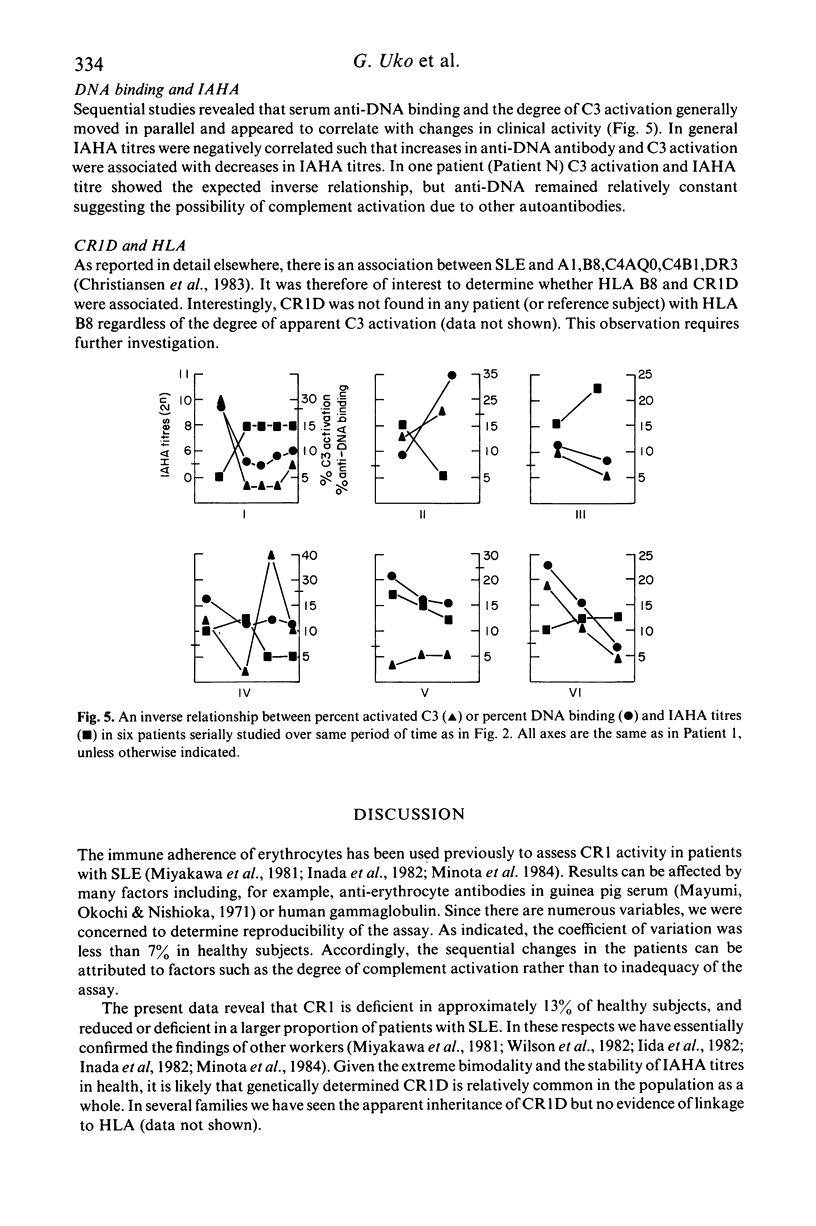
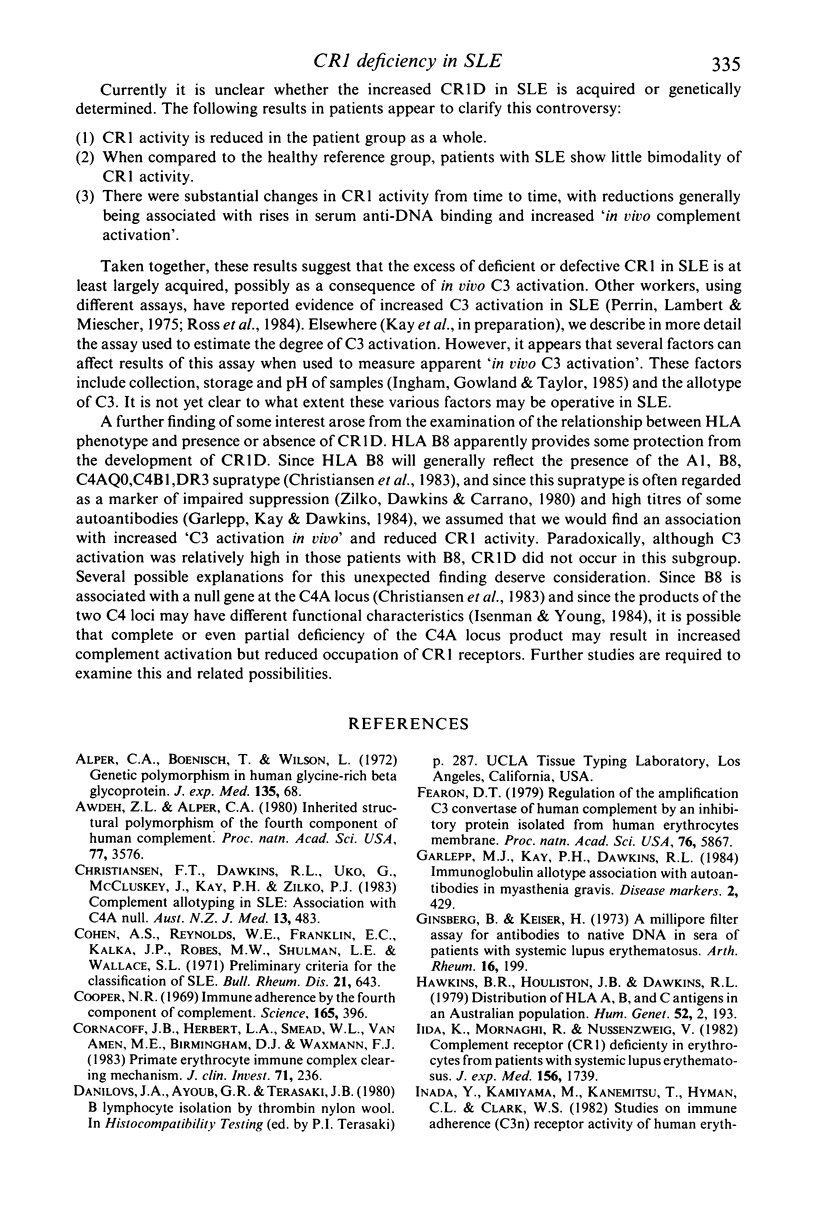
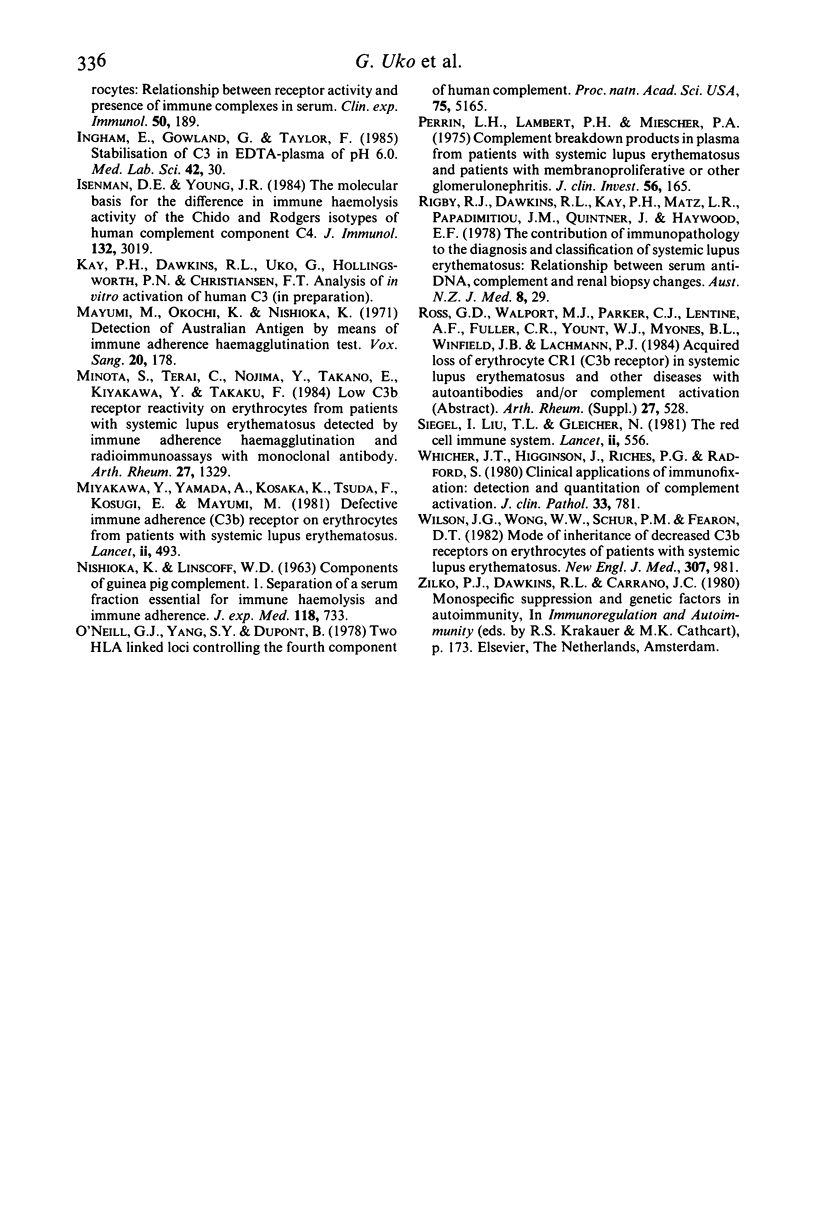
Selected References
These references are in PubMed. This may not be the complete list of references from this article.
- Alper C. A., Boenisch T., Watson L. Genetic polymorphism in human glycine-rich beta-glycoprotein. J Exp Med. 1972 Jan;135(1):68–80. doi: 10.1084/jem.135.1.68. [DOI] [PMC free article] [PubMed] [Google Scholar]
- Awdeh Z. L., Alper C. A. Inherited structural polymorphism of the fourth component of human complement. Proc Natl Acad Sci U S A. 1980 Jun;77(6):3576–3580. doi: 10.1073/pnas.77.6.3576. [DOI] [PMC free article] [PubMed] [Google Scholar]
- Christiansen F. T., Dawkins R. L., Uko G., McCluskey J., Kay P. H., Zilko P. J. Complement allotyping in SLE: association with C4A null. Aust N Z J Med. 1983 Oct;13(5):483–488. doi: 10.1111/j.1445-5994.1983.tb02699.x. [DOI] [PubMed] [Google Scholar]
- Cooper N. R. Immune adherence by the fourth component of complement. Science. 1969 Jul 25;165(3891):396–398. doi: 10.1126/science.165.3891.396. [DOI] [PubMed] [Google Scholar]
- Cornacoff J. B., Hebert L. A., Smead W. L., VanAman M. E., Birmingham D. J., Waxman F. J. Primate erythrocyte-immune complex-clearing mechanism. J Clin Invest. 1983 Feb;71(2):236–247. doi: 10.1172/JCI110764. [DOI] [PMC free article] [PubMed] [Google Scholar]
- Fearon D. T. Regulation of the amplification C3 convertase of human complement by an inhibitory protein isolated from human erythrocyte membrane. Proc Natl Acad Sci U S A. 1979 Nov;76(11):5867–5871. doi: 10.1073/pnas.76.11.5867. [DOI] [PMC free article] [PubMed] [Google Scholar]
- Ginsberg B., Keiser H. A Millipore filter assay for antibodies to native DNA in sera of patients with systemic lupus erythematosus. Arthritis Rheum. 1973 Mar-Apr;16(2):199–207. doi: 10.1002/art.1780160210. [DOI] [PubMed] [Google Scholar]
- Hawkins B. R., Houliston J. B., Dawkins R. L. Distribution of HLA A, B and C antigens in an Australian population. Hum Genet. 1979 Nov;52(2):193–201. [PubMed] [Google Scholar]
- Inada Y., Kamiyama M., Kanemitsu T., Hyman C. L., Clark W. S. Studies on immune adherence (C3b) receptor activity of human erythrocytes: relationship between receptor activity and presence of immune complexes in serum. Clin Exp Immunol. 1982 Oct;50(1):189–197. [PMC free article] [PubMed] [Google Scholar]
- Ingham E., Gowland G., Taylor K. F. Stabilisation of C3 in EDTA-plasma at pH 6.0. Med Lab Sci. 1985 Jan;42(1):30–34. [PubMed] [Google Scholar]
- Isenman D. E., Young J. R. The molecular basis for the difference in immune hemolysis activity of the Chido and Rodgers isotypes of human complement component C4. J Immunol. 1984 Jun;132(6):3019–3027. [PubMed] [Google Scholar]
- Mayumi M., Okochi K., Nishioka K. Detection of Australia antigen by means of immune adherence haemagglutination test. Vox Sang. 1971 Feb;20(2):178–181. doi: 10.1111/j.1423-0410.1971.tb00549.x. [DOI] [PubMed] [Google Scholar]
- Medof M. E., Iida K., Mold C., Nussenzweig V. Unique role of the complement receptor CR1 in the degradation of C3b associated with immune complexes. J Exp Med. 1982 Dec 1;156(6):1739–1754. doi: 10.1084/jem.156.6.1739. [DOI] [PMC free article] [PubMed] [Google Scholar]
- Minota S., Terai C., Nojima Y., Takano K., Takai E., Miyakawa Y., Takaku F. Low C3b receptor reactivity on erythrocytes from patients with systemic lupus erythematosus detected by immune adherence hemagglutination and radioimmunoassays with monoclonal antibody. Arthritis Rheum. 1984 Dec;27(12):1329–1335. doi: 10.1002/art.1780271202. [DOI] [PubMed] [Google Scholar]
- Miyakawa Y., Yamada A., Kosaka K., Tsuda F., Kosugi E., Mayumi M. Defective immune-adherence (C3b) receptor on erythrocytes from patients with systemic lupus erythematosus. Lancet. 1981 Sep 5;2(8245):493–497. doi: 10.1016/s0140-6736(81)90882-5. [DOI] [PubMed] [Google Scholar]
- O'Neill G. J., Yang S. Y., Dupont B. Two HLA-linked loci controlling the fourth component of human complement. Proc Natl Acad Sci U S A. 1978 Oct;75(10):5165–5169. doi: 10.1073/pnas.75.10.5165. [DOI] [PMC free article] [PubMed] [Google Scholar]
- Perrin L. H., Lambert P. H., Miescher P. A. Complement breakdown products in plasma from patients with systemic lupus erythematosus and patients with membranoproliferative or other glomerulonephritis. J Clin Invest. 1975 Jul;56(1):165–176. doi: 10.1172/JCI108065. [DOI] [PMC free article] [PubMed] [Google Scholar]
- Siegel I., Liu T. L., Gleicher N. The red-cell immune system. Lancet. 1981 Sep 12;2(8246):556–559. doi: 10.1016/s0140-6736(81)90941-7. [DOI] [PubMed] [Google Scholar]
- Whicher J. T., Higginson J., Riches P. G., Radford S. Clinical applications of immunofixation: detection and quantitation of complement activation. J Clin Pathol. 1980 Aug;33(8):781–785. doi: 10.1136/jcp.33.8.781. [DOI] [PMC free article] [PubMed] [Google Scholar]
- Wilson J. G., Wong W. W., Schur P. H., Fearon D. T. Mode of inheritance of decreased C3b receptors on erythrocytes of patients with systemic lupus erythematosus. N Engl J Med. 1982 Oct 14;307(16):981–986. doi: 10.1056/NEJM198210143071604. [DOI] [PubMed] [Google Scholar]


